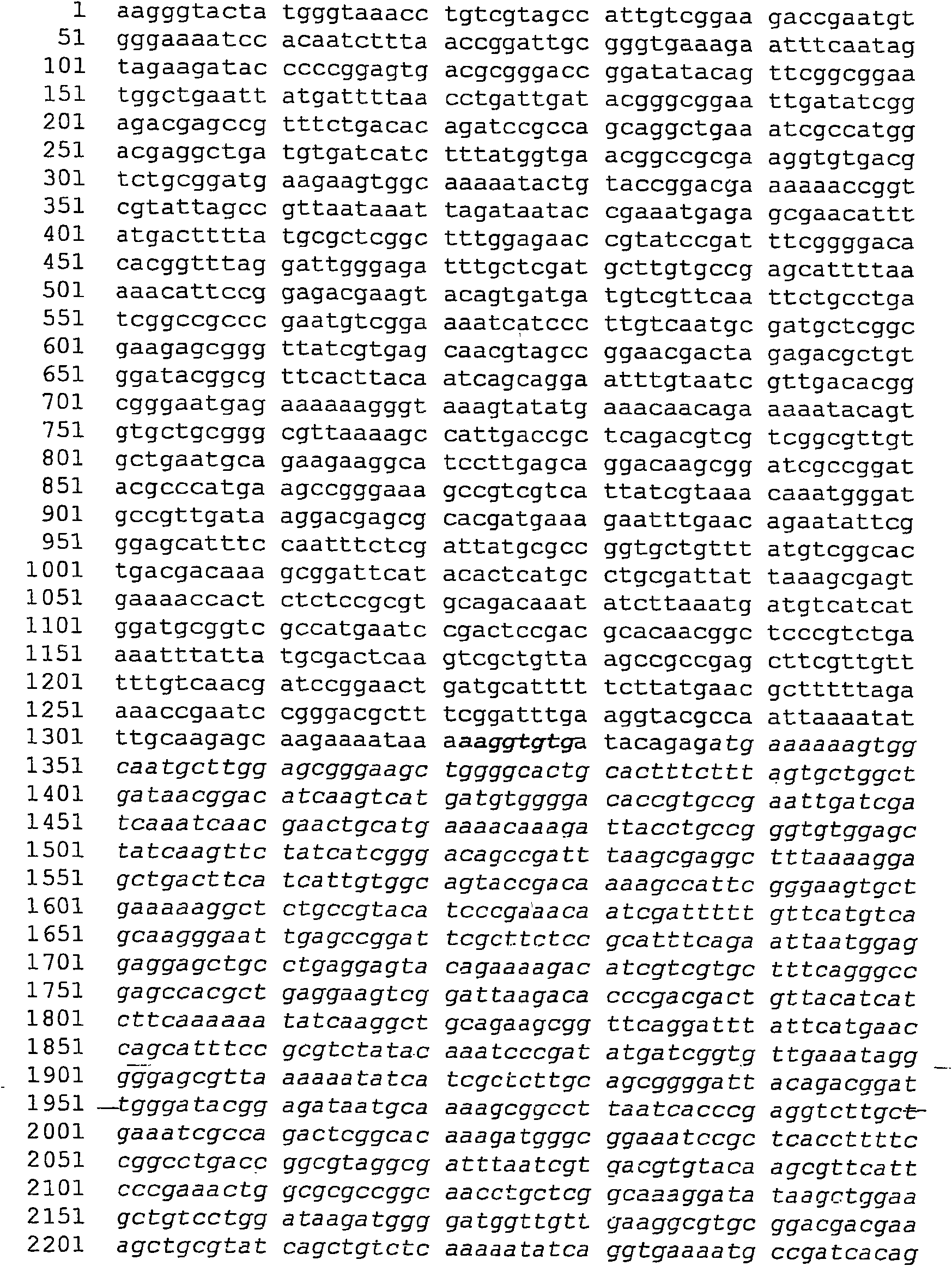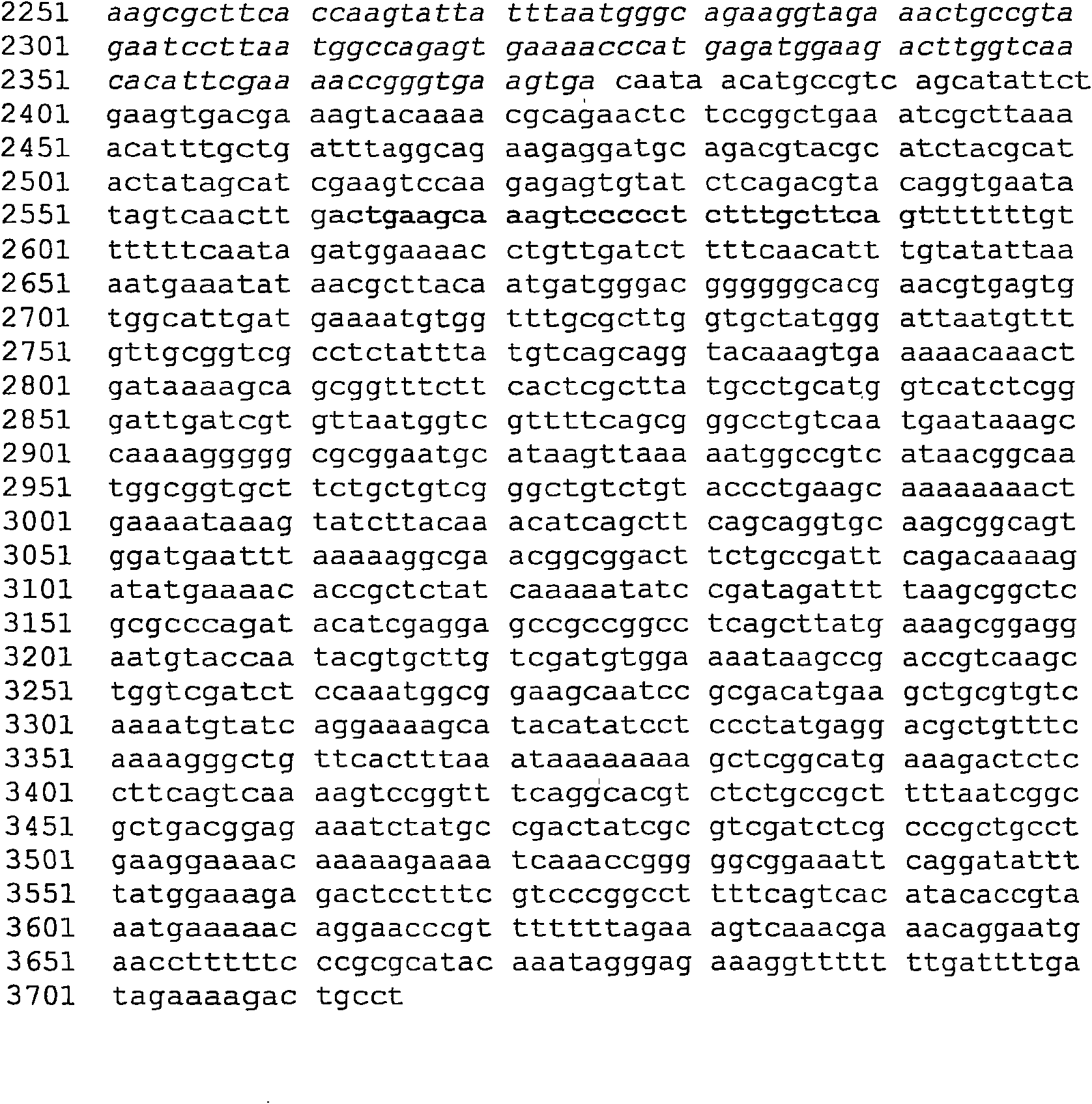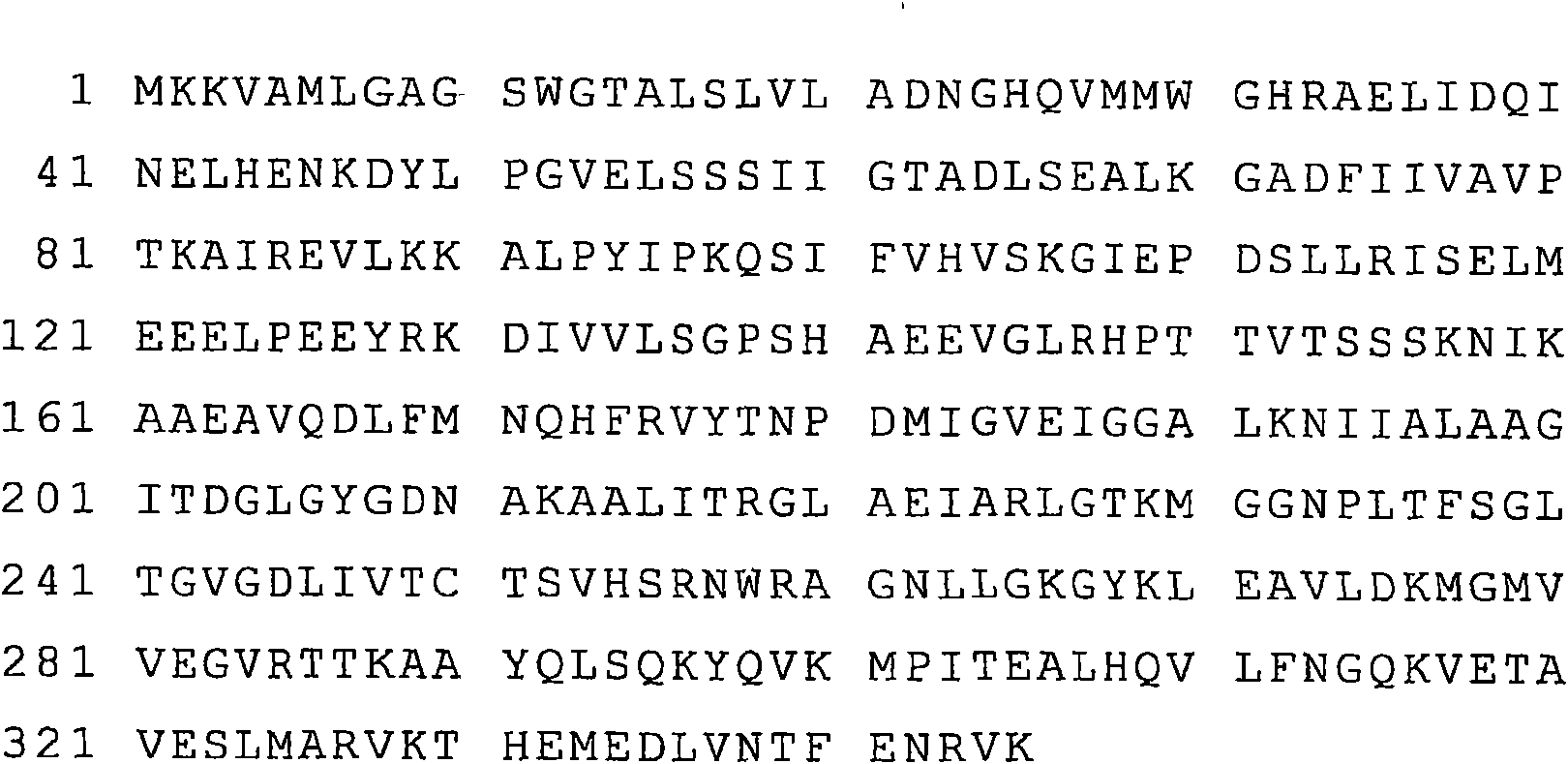Expression system used for the antibiotic-free production of polypeptides
An expression system and DNA sequence technology, applied in the field of expression systems that produce polypeptides in the absence of antibiotics, can solve the problems of poverty, complexity, and methods for increasing the formation rate of products, and achieve the effect of high yield
- Summary
- Abstract
- Description
- Claims
- Application Information
AI Technical Summary
Problems solved by technology
Method used
Image
Examples
example
[0083] Molecular biology work was performed according to standard methods, eg as described in guidelines by Sambrook and Russell (2001, Molecular cloning. Cold Spring Harbor Laboratory Press). All kits and enzymes used were applied according to the respective manufacturer's instructions.
example 1
[0084] Example 1: Isolation of the gpsA gene in Bacillus amyloliquefaciens
[0085] To isolate the gpsA gene, chromosomal DNA of Bacillus amyloliquefaciens (AB Enzymes GmbH strain collection) was prepared by means of the QIAGEN DNeasy Tissue kit (Qiagen, Hilden), and the gpsA gene was amplified thereon by PCR. Primers were thus used that hybridized upstream and downstream of the gpsA gene, so that the gene was fully amplified. The primers are sequences derived from the flanking regions of gpsA as determined by the sequencing in Example 2a). Amplification was performed using the following primers:
[0086] SEQ ID NO. 3: AL 1_1198 gctgttaagccgccgagcttcgttg,
[0087] SEQ ID NO. 4: AR_180C taatcccatagcaccaagcgcaaaccac.
[0088] A DNA fragment containing 1591 bp was completely sequenced using the method of Sanger et al. (1977, Proc. Natl. Acad. Sci. USA 74, 5463-5467). The sequencing primers used are listed in Table 1.
[0089] Table 1: Primers used for complete sequencing of ...
example 2
[0092] Example 2: Deletion of the gpsA gene in Bacillus amyloliquefaciens
[0093] Elimination of the gene gpsA on the chromosome of B. amyloliquefaciens was performed by deletion of the vector. The procedure is based on Vehmaanper Description by et al. (1991). Plasmid PE194 (described in the same article) was chosen as vector for gpsA deletion. The advantage of this vector is that it does not have a temperature-dependent origin of replication. At 28°C, pE194 can replicate in cells so that at this temperature, pE194 can be selected first for successful transformation. Subsequently, cells containing the vector were incubated at 46°C. At this temperature, the vector no longer replicates and selection pressure is exerted when the plasmid integrates into the chromosome via one of the two regions of homology (upstream and downstream of gpsA). Subsequently, further homologous recombination via another (second) region of homology results in deletion of gpsA. Further recombinat...
PUM
 Login to View More
Login to View More Abstract
Description
Claims
Application Information
 Login to View More
Login to View More - R&D
- Intellectual Property
- Life Sciences
- Materials
- Tech Scout
- Unparalleled Data Quality
- Higher Quality Content
- 60% Fewer Hallucinations
Browse by: Latest US Patents, China's latest patents, Technical Efficacy Thesaurus, Application Domain, Technology Topic, Popular Technical Reports.
© 2025 PatSnap. All rights reserved.Legal|Privacy policy|Modern Slavery Act Transparency Statement|Sitemap|About US| Contact US: help@patsnap.com



